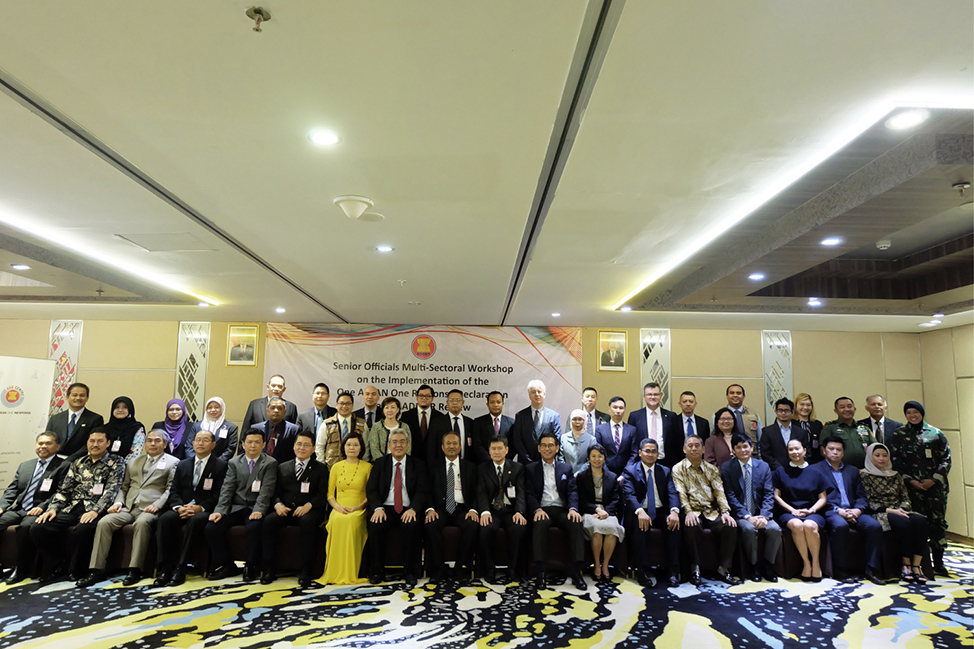
MRS. DAM HOA
Mrs. Dam Hoa is one of Viet Nam’s senior disaster managers, and one of the ASEAN region’s leading female figures in the sector. Hoa, as she likes to be called, has spent over ten years working in the field of natural disaster management, now she is working at Science and Technology and International Corporation Departments of the Vietnam Disaster Management Authority (the nation’s National Disaster Management Office – NDMO), working on a range of disaster management projects across the region, as well as supporting ASEAN communities through numerous disaster responses. Through her time in the field Hoa has witnessed the transformation of ASEAN disaster management, directly experiencing the positive changes and improvements that can be witnessed across the region.
Hoa didn’t choose the disaster management path from the beginning. After graduating, she began working with NGOs, such as the Asian Disaster Preparedness Centre (ADPC) in Thailand, implementing disaster reduction programmes in Laos, Cambodia, as well as her homeland of Vietnam – and things just built from there. “Vietnam is a country often affected by natural hazards, so when I began to work in this field, I enjoyed the work so much that I just continued” she recalls. She also remembers her first engagement in a disaster response in Vietnam, being on stand-by for 24 hours at a time to provide information from the field to her head office and then back again. This experience led Hoa to becoming an ASEAN-ERAT member, a programme that she sees the importance of, particularly within the ARF Disaster Relief Exercises (ARF DiRex). “I learned so much from these exercises” she states, “particularly related to the civil-military components”.
Hoa’s experience has been a value asset to disaster management in Vietnam, and conversely she has also witnessed the ongoing improvement of disaster management within her country. “Previously we mainly focused on emergency response, but now we are developing some prevention and mitigation programmes” she tells. When she started with Vietnam’s NDMO, prevention and mitigation were basically not much, but things have changed remarkably in the last ten years. Hoa and her office now engage on preparedness programme development with international organisations, alongside efforts in community disaster management, and increased integration, mobilisation and contributions from local authorities. “We also developed a National programme on public awareness rising and community based disaster management for Vietnam, and in 2013 we formalised a law on disaster prevention and mitigation” says Hoa.
Achieving this has not been void of challenges for Hoa and her counterparts, particularly regarding awareness-raising efforts for the rural communities in Vietnam. “Because of our topography, each region has its own characteristic of disaster” she explains, “so the information and how we deliver it can be very different”. Hoa also recognises the different awareness levels and approaches required for the variety of societal groups that make-up Vietnam, including intricacies related to gender, socio-economic status, and also indigenous groups. To overcome such challenges, Hoa believes it is important to promote disaster awareness and preparedness to all people, at all times, particularly for outer-lying communities. Not only in the disaster time, but also in the normal time. “We should maintain communication not only on a national level, but also on a local level” Hoa states. “If people are aware, they can be more prepared and lessen the impact of disaster that can sometimes be amplified due to their remoteness.”
Hoa’s experience of the transformation in disaster management is not limited to Vietnam alone – but is a phenomenon she has seen transpiring across the ASEAN region. Increased awareness, resources and funding have supported the development and advancement of preparedness and mitigation activities, while importantly still ensuring the strengthening of disaster response mechanisms. Much of this advancement, according to Hoa, is due to the establishment of the ASEAN Agreement on Disaster Management and Emergency Response (AADMER). “This base legal document allows us all in the region to facilitate and work together – it is the backbone for our cooperation.” Hoa also recognises the value in both formal institutions such as the AHA Centre, as well as the informal connections that the ASEAN disaster management movement has created across the region.
“If we need something, we can ask someone from the AHA Centre, or as a country we also already have the network to reach-out for information or support.”
Written by : William Shea | Photo : AHA Centre





